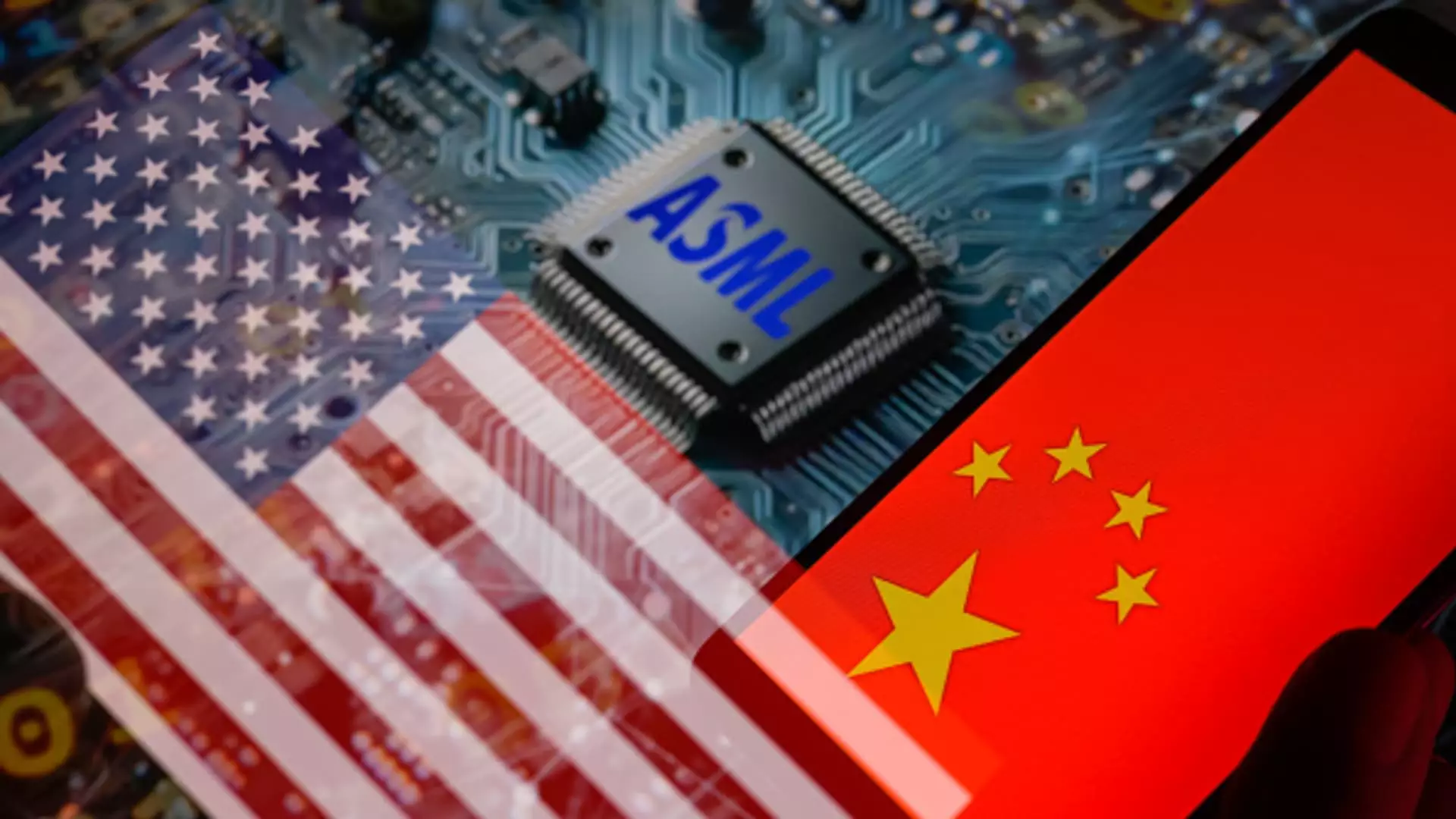ASML, the Netherlands-based behemoth in the chip manufacturing equipment sector, recently provided insight into how US export restrictions will affect its operations in China, a critical market for its advanced technologies. The company’s latest earnings report revealed a downward adjustment in its revenue projections for 2025, forecasting between €30 billion and €35 billion ($32.7 billion to $38.1 billion). This revised estimate is notably at the lower end of what the company had previously anticipated, reinforcing the significant challenges it faces as geopolitical tensions shape the global semiconductor landscape.
ASML is a linchpin in the global semiconductor supply chain. Its cutting-edge Extreme Ultraviolet (EUV) lithography systems are essential for producing the highly advanced chips used across various sectors, highlighted by the likes of Nvidia and Taiwan Semiconductor Manufacturing Company (TSMC). Despite posting strong third-quarter sales of €7.5 billion, ASML’s weaker-than-expected net bookings—only €2.6 billion against a projected €5.6 billion— has raised eyebrows and sent its stock plummeting by as much as 16% in one day. The drop in market capitalization underscores the investor apprehension regarding long-term sustainability in a critical market.
The implications of U.S. export controls—particularly on advanced technology—have left ASML reevaluating its China strategy. The company’s CFO, Roger Dassen, commented on how the geopolitical climate has fostered a shift in the business landscape. Analysts note that the forecast adjustment is primarily due to delays in new logic fabrication projects at major clients such as Intel and Samsung, leading to a projected 25% to 30% decrease in sales to China by 2025.
This trend highlights the shifting dynamics of dependencies and market strategies in high-stakes technology sectors, where political unrest can swiftly change business trajectories. UBS analysts indicate that ASML’s anticipation of a “normalized percentage” from China represents a broader shift where the company is forced to rely less on what was once its most lucrative market.
Fascinatingly, there has been a surge in orders for ASML’s less advanced Deep Ultraviolet (DUV) machines from Chinese customers eager to stockpile critical technology before stringent export restrictions took full effect. This behavior was observed in the first three quarters of 2024, when ASML noted that nearly half of its sales were derived from Chinese clients attempting to circumvent looming regulations. This contrast could suggest that while immediate sales surged due to stockpiling, a subsequent decline seems inevitable as the market adjusts to the new regulatory environment.
The increased demand for older-generation DUV machinery appears paradoxical in the face of future restrictions. While it initially compensates for the revenue losses from exports of newer, more advanced equipment, the long-term repercussions could lead to significant shortfalls once the dust settles. Analysts estimate that revenue from China could witness a staggering 48% decline on a year-over-year basis, indicating a severe contraction as ASML grapples with external pressures.
Future Prospects and Strategic Implications
As ASML prepares for a future where China constitutes only about 20% of its total revenue—down from 29% last year—the strategic implications of this shift become pronounced. The company faces an existential challenge; navigating a market increasingly fraught with geopolitical risks and an uncertain regulatory environment will require agility and strategic foresight.
The relationship between ASML and China, once symbiotic, is now fraught with risk. With export restrictions tightening, there is a genuine concern that the firm may witness a broader drop in demand not just from China but potentially from other markets that depend on its technology. Abishur Prakash of The Geopolitical Business warns that as the global semiconductor arena continues to disentangle from China, ASML’s position may increasingly become precarious.
ASML stands at a crossroads defined by external pressures reflective of larger geopolitical shifts. The company’s ability to adapt to such constraints will ultimately determine its resilience. As it recalibrates its business framework amidst diminishing Chinese revenues and the looming specter of export controls, ASML will have to find new pathways to innovation and market expansion to offset these challenges. Without a proactive approach, the looming question remains: can ASML maintain its influential role in the global semiconductor landscape while navigating the turbulent waters of international politics?

Leave a Reply